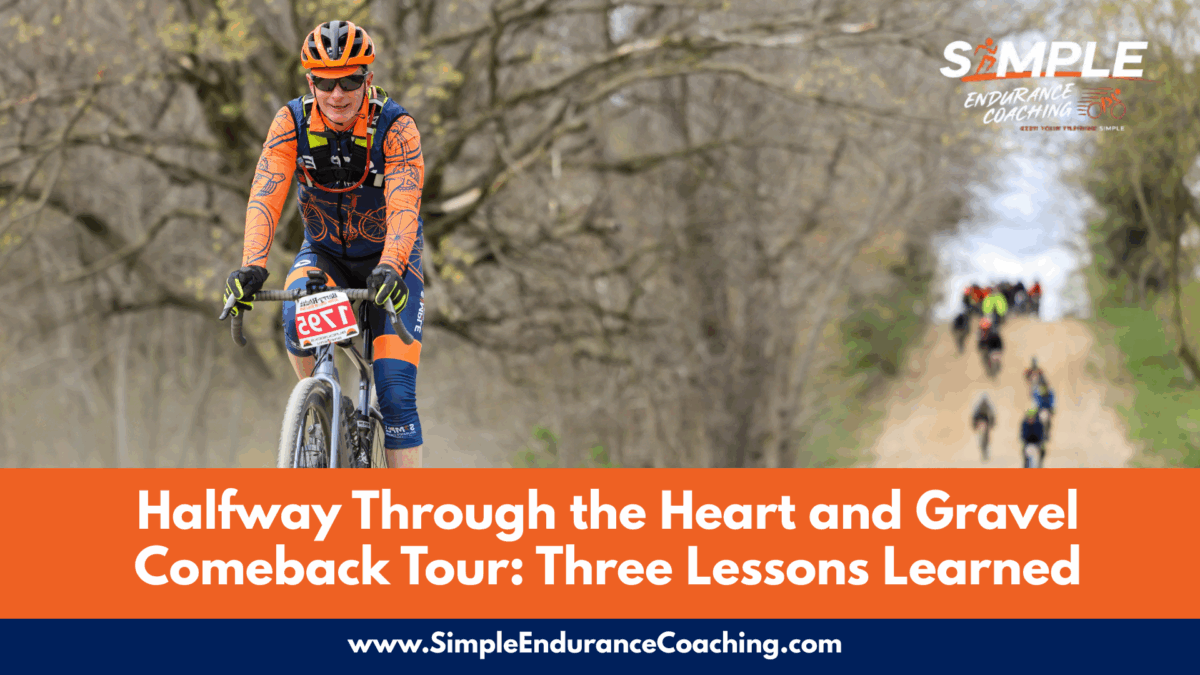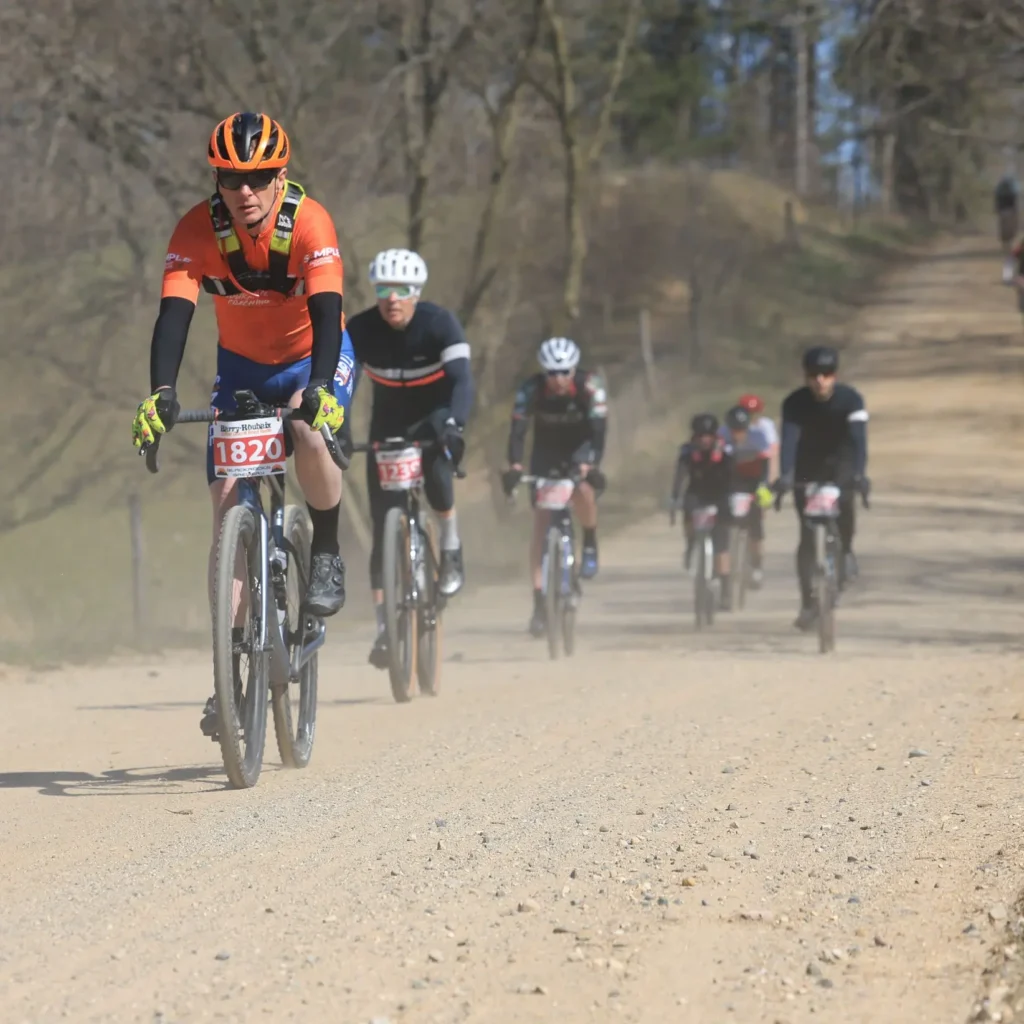Achieve More Endurance Training Success Using Your Unique Thresholds
As regular everyday cyclists and runners, we need to maximize our training time.
That means we need to understand how to structure our training to get the most adaptation out of the least amount of training.
To do that, we need to know how hard and how easy to train so that we don’t end up overtrained, hurt, or even undertrained.
Understanding the points at which our bodies start to adapt differently, or at different rates, helps us know how hard – or easy – to train.
Knowing our first and second thresholds are one way of helping us understand how to train.

Thresholds can define training intensity based on physiology
I coach cyclists and runners as well as teach Boot Camp classes, and I often get in discussions about “thresholds.”
And since there are so many “definitions” of thresholds, I thought I might get myself in trouble by talking about what they are, and why they matter.
What matters is that when you understand and generally know your thresholds, you’ll get more out of your workout because you understand the PURPOSE of the workout.
And if you want particular adaptations in your body, you work at that particular intensity based on your thresholds.
Thresholds can be a bit confusing, even to the experts
Let’s get one thing straight, right off the bat: I’m not a scientist, nor a physiologist.
I’m going to share my generalist’s understanding of thresholds to help you understand how knowing your thresholds can help you train more efficiently.
The thing is, though, that even scientists argue about definitions!
And there is not even consensus from coaches and scientists about what thresholds even mean.
So the purpose of this article is to share how I understand and use thresholds, and, more importantly, know how to use thresholds to maximize our training time.
Four exercise domains (zones) help us understand the purpose of workouts
First, the background.
The idea of thresholds is to describe different responses to exercise intensity.
Physiologists refer to four different domains of physiological response: Moderate, Heavy, Severe, and Extreme.
Each domain marks a different response to exercise, and also different adaptations in your body.
And the thresholds mark the changes in response as you move between domains, particularly the kind of fuel your body needs to match the intensity demands.
Generally, the Moderate domain means endurance training, Heavy means threshold and tempo, Severe means VO2max, and Extreme is sprint training.
You can get more in-depth into the domains with this video.
What’s important to know is that there is NO on-off switch for these domains.
You don’t enter one domain and everything changes.
And adaptations like improving the function of your heart happen in all domains.
It’s just that in each domain, more or less adaptation happens more or less quickly.
Three systems that respond to endurance training
Very generally, our bodies have three systems that all respond to training in different ways but they are related.
First of all, your muscle fibers respond to the intensity. But muscle response is typically measured through biopsies, which are way too invasive and painful for nearly all of us.
Second, your cardio-respiratory system responds when your heart pumps differently and your lungs pump out different levels of oxygen.
Third, your muscles and cardio-respiratory systems depend on fuel, and as intensity increases, the fuel needed to match the intensity also changes.
This is such a broad stroke of physiology, and I apologize to all physiologists who are cringing right now.
But for most of us, these are the systemic changes that matter in our training.
And what matters is knowing that changes in your cardiovascular system, your respiratory system, and your fueling can make a difference in understanding how you should be training.
The Thresholds (first and second) mark the change from Moderate to Severe and from Severe to Heavy.
Again, these are not light-switch changes.
You need a mix of training to maximize adaptations
The adaptations we want from training happen in all four domains with more or less effect.
For example, training in the Moderate domain or endurance zone produces a lot of great adaptations from more mitochondria and capillary development to fatigue resistance in muscle fibers.
But training in the Heavy and Severe zones also produces similar adaptations even faster.
However, if you train all the time in the Heavy and Severe domains, you’re going to get tired and miss out on a lot of additional adaptation.
The bottom line is that you need a mix of training to get all the adaptations.
One system that changes with intensity is your heart
When you exercise more, your heart pumps more, and your heart rate increases.
Most of us who train have a heart rate monitor, and we can use it to determine how hard to go.
You can bust out a 10k run or a bike race and see what your average heart rates are.
But you can also use a Talk Test to measure your ventilatory thresholds.
Your heart and lungs, or cardiovascular and respiratory systems, respond similarly to exercise intensity.
The first, known, unsurprisingly, as the first ventilatory threshold, occurs when you cross from the Moderate to Heavy domain when the exercise intensity makes your breathing a little harder.
You can go from arguing about politics and religion to not being able to do so.
You can usually talk in complete sentences in the Moderate domain, and talk in slightly labored sentences in Heavy.
The change from Heavy to Severe, the second ventilatory threshold, is more pronounced: You are no longer able to speak in sentences and can get a few words out.
This second threshold is when you’re really breathing hard.
Those thresholds roughly correspond to your heart rate thresholds.
There are other formulas and calculations you can do to measure your heart rate thresholds.
Lactate thresholds can measure the body’s response
The other main kind of threshold is your lactate threshold.
When you exercise, your muscles produce lactate (which is used as a fuel).
When your exercise becomes slightly more intense, you cross the first lactate threshold because your lactate levels go from one level to a higher level.
Your second lactate threshold goes from a moderate increase in production to a point where your body can no longer consume all of it as fuel.
Technically, this is called the Maximum Lactate Steady State as well since it’s the point where lactate production and lactate consumption are roughly the same.
You find these points by doing a lactate test (pricking your finger or ear during an increasingly challenging test to measure lactate levels.
Lactate and Ventilatory Thresholds are usually similar
Thankfully, your ventilatory and lactate thresholds are roughly correlated to each other and are usually pretty close together.
That means if you start breathing a little harder in your exercise, not only have you crossed the first ventilatory threshold, but you have also likely crossed the first lactate threshold.
Same with the second threshold.
When your breathing becomes really labored, you have crossed the second ventilatory threshold, and you are likely past the lactate threshold.
It can be tough to find your exact threshold – but that’s okay
Here’s the problem, though: It’s tough to know where those thresholds actually occur so you can use them to determine how you should be training!
Lactate testing, although it’s becoming easier, is still an issue and generally requires a lab or at least an assistant to help you draw blood.
And listening to your breathing is an inexact science as well.
Plus, there are now bunches of different names for both of the thresholds, which makes talking about them even more confusing.
Our training zones for cycling and running are typically also really confusing, mostly because the zones are meant to be used by coaches to describe how hard you should be working and NOT to describe the physiological responses.
Talk Test, Ramps, Max Heart Rate, and Critical Power
If you are a runner or a cyclist without a power meter, generally the talk test is a decent way to measure your thresholds.
You can also do a Conconi test as outlined here.
If you have Zwift or a smart trainer for your bike, you can do a Ramp Test.
As a runner, you can do this maximum heart rate test.
Know in advance that none of these are precise tests, and can only get you in the ballpark of knowing your thresholds.
Generally, that’s enough to get you started. You can get general ranges of your responses to exercise stimuli.
If you have a power meter on the bicycle, doing a Critical Power test, as outlined here, is generally the best way of marking the change from Heavy to Severe domains.
The Critical Power is closely correlated with the second lactate threshold.
You can also do a Functional Threshold Power 20-minute test on the bike to get your FTP, which is sort of correlated to Critical Power but tends to have the reliability of Ramp and Conconi tests.
Critical Power tends to be a more accurate measure of the physiological point your systems change domains and is roughly correlated to MLSS.
Three things to know about thresholds
What to take from all of this?
- Knowing your thresholds is a good way to know how to set up your training.
- There are a variety of tests to measure your Critical Power or Maximum Heart Rate to help you set training zones.
- Learning to guide your training by moderate, hard, and really hard levels helps you learn how to train better.
Here is a really good research review that describes the importance of knowing your thresholds so you can train more precisely.
And here is a more in-depth description of these thresholds and domains.
Understanding your thresholds helps you define the intensities of your training.
You also need to understand how to create a program that maximizes your training time to get as many adaptations as you can in as little training time as possible.
More on that coming soon!
Want to know more about endurance training?
If you liked this article, please share it with others.
I support a limited number of cyclists and runners achieve their goals with more strength, endurance, and mobility.
Contact me or sign up for Virtual Coffee so we can discuss your goals, ask questions, and talk about making your endurance training more effective, fun, and Simple.
You can also opt-in to receive my weekly blog posts about what works in endurance sports.
Paul Warloski is a:
- USA Cycling Level 3 Coach
- RRCA Running Coach
- Training Peaks Level 2 Coach
- RYT-200 Yoga Instructor
- Certified Personal Trainer





